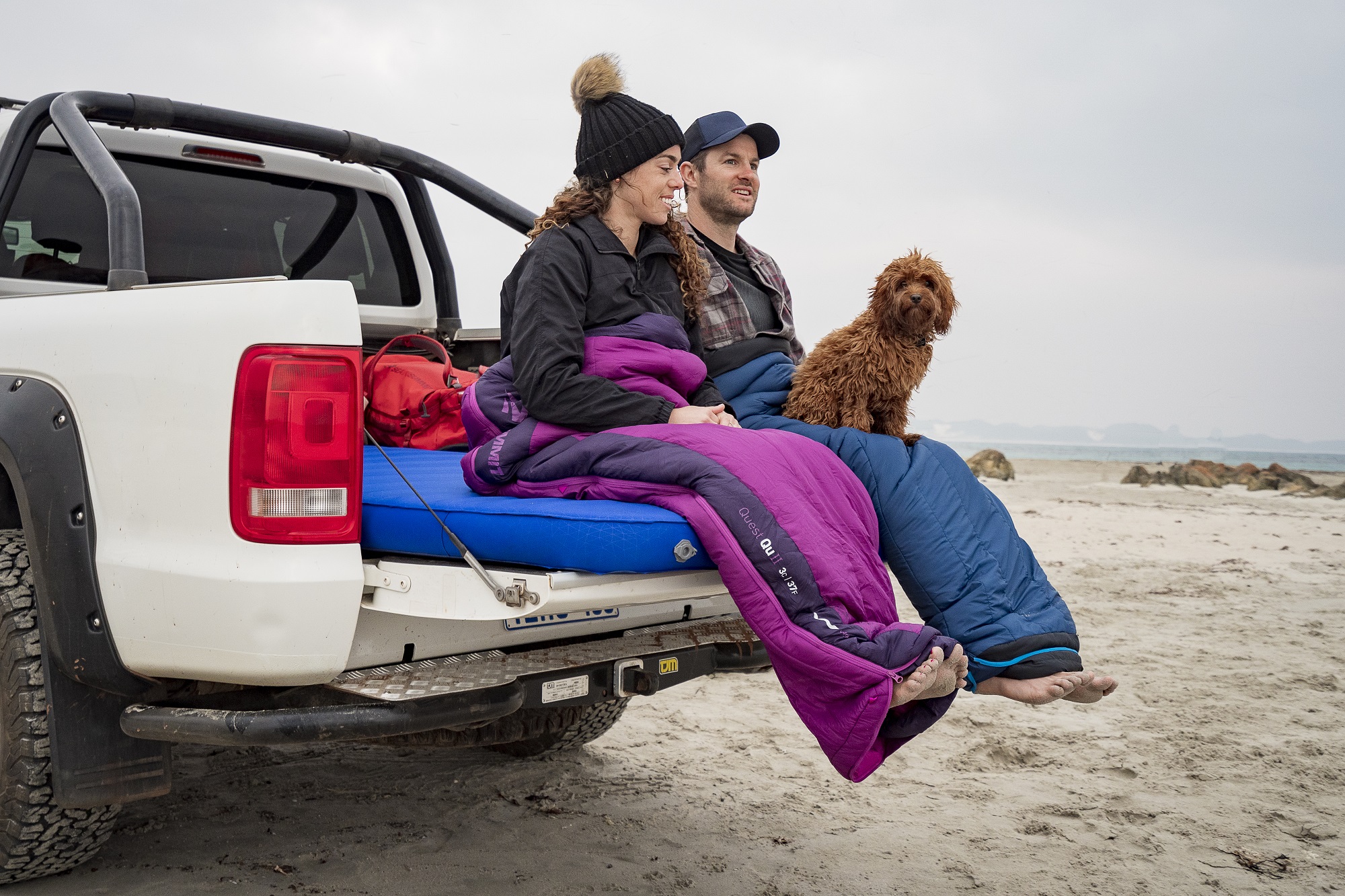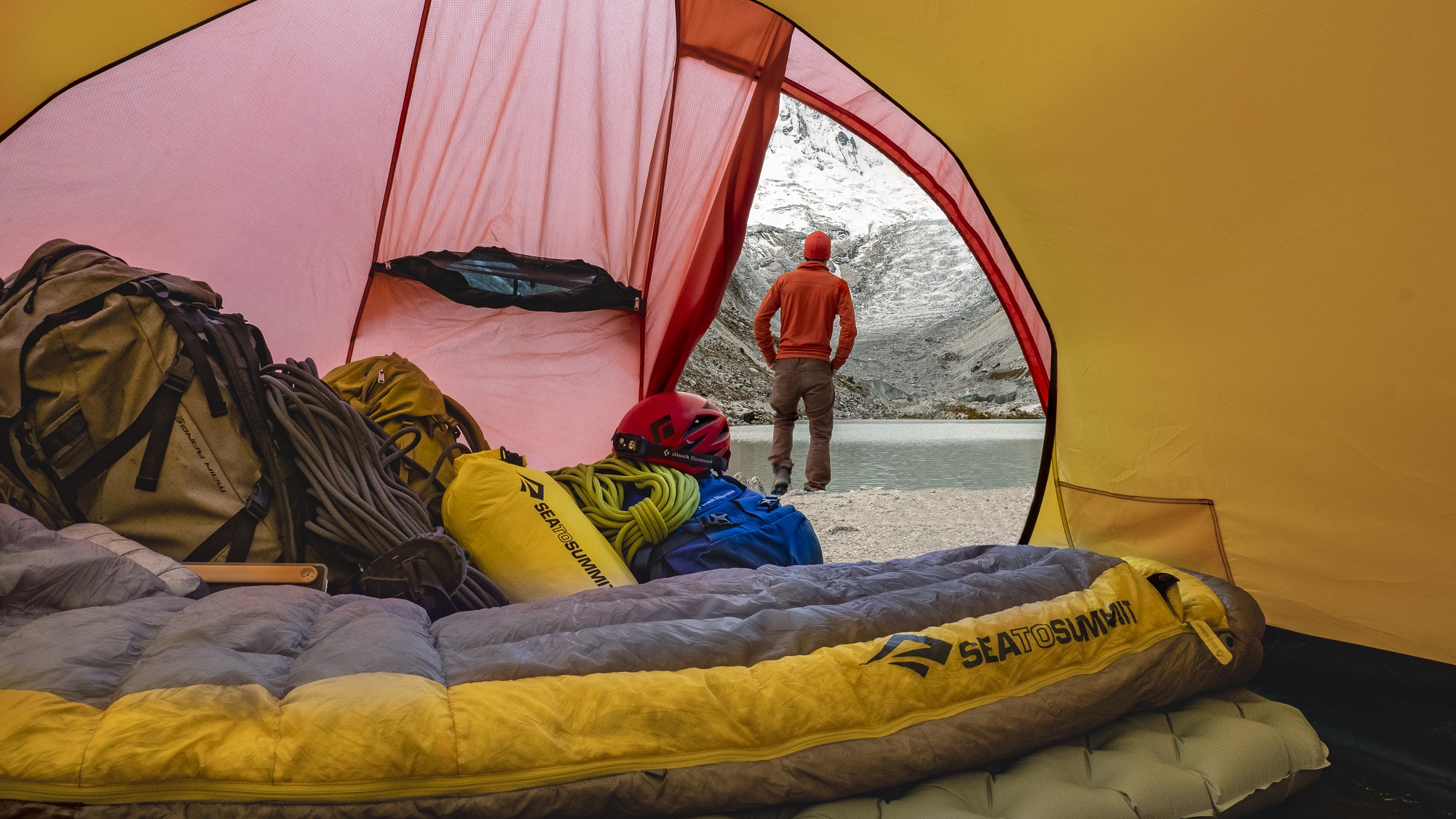Text: Alessandra Sola
Washing the sleeping bag – How to
You may have never thought about it, but your sleeping bag needs maintenance, too. When sand, dirt, and grime from the outside world begin to impair its performance, washing it by hand or in the washing machine is the solution you never knew you needed! How?
Our friends at Sea to Summit have compiled a list of simple steps and tips to help you.


The frequency of washing
The area where you will notice, from the first uses, the dirt will be on the hood and neck. To avoid compromising the interior insulation, the effects of which you will not see but will feel over time, you can consider machine or hand washing. Do not overdo the washing. Good references, obvious but not too obvious, can be the color or smell emanating from your sleeping bag.
Unsuitable products can ruin its performance, so we recommend, in addition to not washing too frequently, the use of correct soaps and detergents. Let’s find out which ones.

Mode and use of soaps
If your sleeping bag is down, never dry clean it!
Chemicals used in this process can remove the oils in the quilt, preventing it from insulating properly. Use a quilt soap and suitable products to maintain its hydrophobic performance.
What not to use
For both types of sleeping bags, synthetic and down, the enemy is conventional laundry detergent. Bleaches and fillers within it can adhere to polyester fibers, reducing their insulation or remove oils from the down.
Machine Washing
If you choose to wash it in the washing machine, to avoid finding little fur and a lot of sack, use a front-loading washing machine and not a top-loading one, which would have too violent of a shock.
Before inserting it close all the zippers. Always select a gentle cycle, the wool cycle is ideal, with temperature settings no higher than 40°C, and an extra rinse.
The centrifuge is essential! It must be long and fast so that as much water as possible is removed before drying.
Hand washing
In case your washing machine, especially for down sleeping bags, does not have a delicate cycle, hand washing is the solution. The bathtub may be the most convenient place to undertake this small undertaking. After making sure it is clean, turn the sleeping bag upside down and insert it by covering it with warm water. Use the indicated amount of soap and get ready for the fun part: “the dough.” If using your arms becomes too much of a chore, why not roll up your pants and pretend to press grapes? It is fun and, above all, very effective.
Consider, depending on how long it has been since the last washing, repeating this “beating” several times, replacing the dirty water with clean water each time. When finished, do not pick it up: the weight of the water in the insulation can tear the baffles if made of feathers, the seams securing the insulation if synthetic, or cause the down to shift or “migrate” from one chamber to another. Carefully roll it up to squeeze it. At this point you can flip it over and prepare for drying.
Dry in the dryer
If you have the option of drying your sleeping bag in a dryer, the best way to do this is to place it in a large cotton laundry bag. The temperature to use is the lowest available, or select a program for delicate garments and proceed with a full cycle.
Warning. In laundromats, the thermostat is often inaccurate. It then manually sets the coldest cycle.
Avoid, in either case, using dryer sheets. They compromise the water-repellent finish of the shell and, as a result, reduce perspiration.
Repeat the drying process as many times as you deem necessary, and flip, with each cycle, the sleeping bag inside the wrapper. Check carefully that it is completely dry-even a very low percentage of moisture can cause mold and mildew.
Little tip: To avoid lumps during drying, insert tennis balls or appropriate ones that you can find in home linen stores into the wrap. If, between cycles, you feel lumps in the quilt, it means it is not yet dry.
Dry without a dryer
Before storing it for drying, try to air it out and remove as much water as possible. Hang it in a dry place where it can get air before being placed back in its bag.
These instructions will enable you to wash it properly, preserving its quality and warmth. If all this is a bit too much trouble, a sheet bag to put inside may be the solution to avoid washing your sleeping bag too often!
